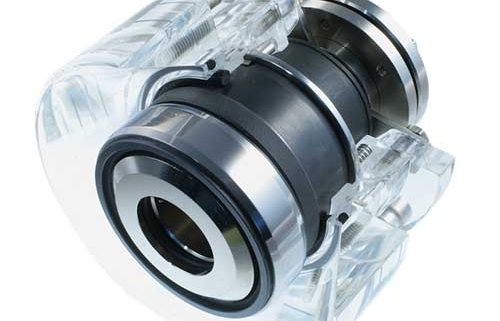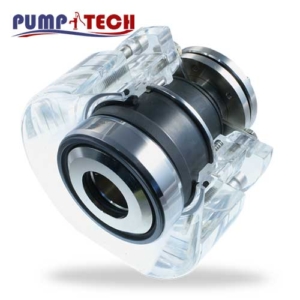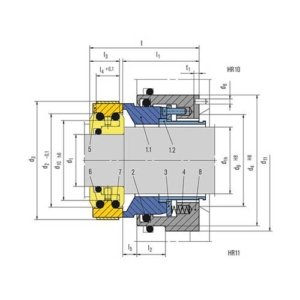

Features mechanical seal hr
- Single seal
- Balanced
- Independent of direction of rotation
- Multiple springs stationary
- Seat rotating
- Seat arranged directly behind the impeller
- Spring protection sleeve
- Variant with cylindrical spring and acc. EN 12756 (HRZ1) available
- Variant as cartridge with/without guide sleeve for application with/without quench (HR2, HR3)
- Dual seal as cartridge unit (HRKS-D) available
Advantages mechanical seal hr
- Especially for application in solids containing media without external flush or internal product circulation. Solids content 40 % (single seal) and 60 % (double seal)
- Operation under vacuum without seat locking possible
- Pumping screw for increased circulation available
- Springs are protected from product and leakage

Operating range mechanical seal hr
- Shaft diameter: d1 = … 65 mm (2.56″)
- Pressure: p1 = 0.3 bar (4.35 PSI)
- Temperature:
t = -20 °C … 100 °C (-4 °F … 212 °F) - Sliding velocity: vg = 10 m/s (33 ft/s)
Materials mechanical seal hr
- Seal face: Carbon graphite resin impregnated (B)
- Secondary seals: NBR (P)
- Springs: CrNi steel (F)
- Metal parts: CrNi steel (F)
| Item | Part no. DIN 24250 | Description |
| 1.1 | 472 | Seal face |
| 1.2 | 520 | Sleeve |
| 2 | 412.1 | O-Ring |
| 3 | 474 | Thrust ring |
| 4 | 477 | Spring |
| 5 | 475 | Seat (G11) |
| 6 | 412.2 | O-Ring |
| 7 | 412.3 | O-Ring |
| 8 | 441 | Housing |
Recommended applications seal hr
- Process industry
- Oil and gas industry
- Refining technology
- Petrochemical industry
- Chemical industry
- Pharmaceutical industry
- Power plant technology
- Pulp and paper industry
- Water and waste water technology
- Mining industry
- Building services industry
- Food and beverage industry
- Shipbuilding
- Sugar industry
- Metal production and processing



